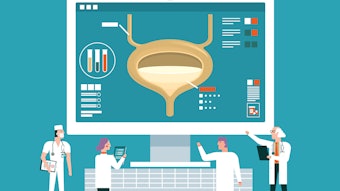Panel to explore updated vasectomy guidelines
Guideline authors emphasize minimally invasive approaches and post-vasectomy fertility.

AUA2025 attendees will get the first public glimpse of the updated vasectomy guidelines during the AUA Annual Meeting in Las Vegas. The mechanics of performing a vasectomy have not changed since the AUA guidelines were first published in 2012, but the social and cultural contexts are different.
“Vasectomy still remains one of the most utilized outpatient urology procedures,” said Akanksha Mehta, MD, MS, professor of urology at Emory University School of Medicine. “The importance of vasectomy as a male method of contraception has changed given recent changes in the political climate. Discussions around consultations for vasectomy, including who is eligible and who is not, advice for patients who have not previously fathered children, and recommendations regarding fertility potential after vasectomy—all of that is changing dramatically.”
Dr. Mehta will lead “Case-Based Guidelines Panel Discussion: Vasectomy Update,” 2:05-2:35 p.m. on Monday, April 28, in the Venetian Ballroom. The guidelines will be released for public comment after the AUA Annual Meeting, with publication planned for fall 2025.
The initial guidelines, which were amended in 2015, emphasized that there was no single best approach to vasectomy. Approaches varied significantly among clinicians, from bilateral open procedures to minimally invasive no-needle, no-scalpel alternatives, and practitioners were advised to use the approach with which they were the most comfortable. Updated guidelines will likely emphasize minimally invasive approaches that are more efficacious for patients and likely more familiar to more recently trained urologists.
Urologists can also expect two new topics.
One is the first discussion of managing post-vasectomy fertility, either via reversal or sperm extraction plus in vitro fertilization.
The second is the use of at-home or mail-in testing for semen analysis, which was not available when the current guidelines were published. The return rate for post-vasectomy semen analysis is less than 70%, Dr. Mehta noted, which has given some urologists pause.
“This is one of the most litigious procedures in urology,” she said. “If you can optimize clinical outcomes and optimize the chances of a patient completing a post-vasectomy semen analysis test by offering them an at-home or mail-in test, that definitely gives us some peace of mind.
Guideline authors have also included a discussion of the latest data on the relationship between vasectomy and the incidence of later urologic diseases and conditions. New data suggests that the observed association between vasectomy and subsequent urologic complaints is an artefact of vasectomy patients being more likely to have greater familiarity and comfort with urologists, and more urologic interactions compared to similar patients who have not undergone vasectomy.
Ongoing social and political changes surrounding contraception and abortion are also encouraging more individuals and couples to consider vasectomy. Gone are the days when urologists strictly discouraged vasectomy for those who had not had children or might want children in the future.
“People have vasectomies for all sorts of reasons and personal choices, so tailored counseling for each patient is essential,” Dr. Mehta said. “As reproductive choices become more complex, we are going to see more and more patients lean toward getting a vasectomy. We have to be mindful of these changing trends.”











